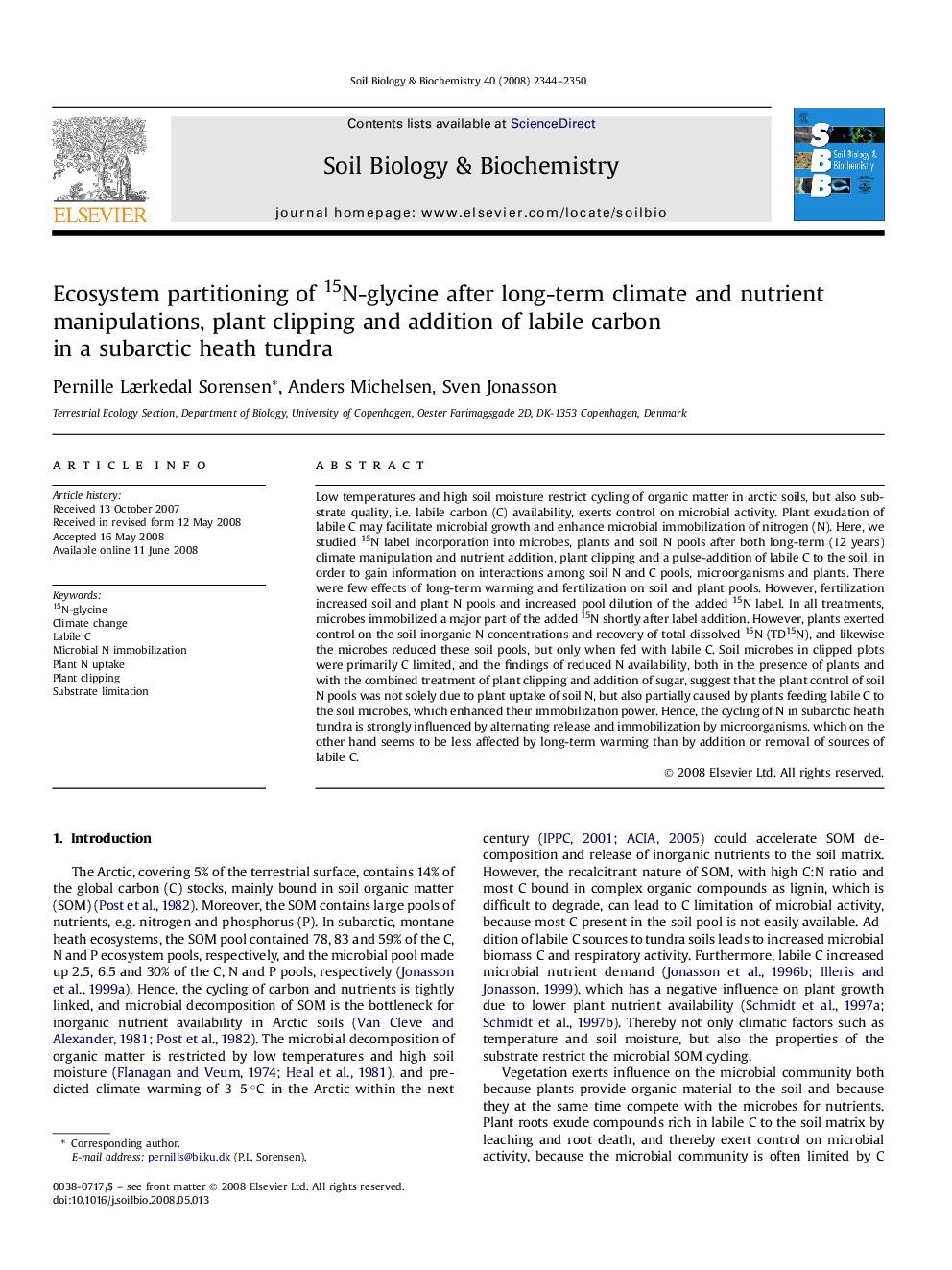| کد مقاله | کد نشریه | سال انتشار | مقاله انگلیسی | نسخه تمام متن |
|---|---|---|---|---|
| 2026896 | 1070054 | 2008 | 7 صفحه PDF | دانلود رایگان |
عنوان انگلیسی مقاله ISI
Ecosystem partitioning of 15N-glycine after long-term climate and nutrient manipulations, plant clipping and addition of labile carbon in a subarctic heath tundra
دانلود مقاله + سفارش ترجمه
دانلود مقاله ISI انگلیسی
رایگان برای ایرانیان
کلمات کلیدی
موضوعات مرتبط
علوم زیستی و بیوفناوری
علوم کشاورزی و بیولوژیک
دانش خاک شناسی
پیش نمایش صفحه اول مقاله

چکیده انگلیسی
Low temperatures and high soil moisture restrict cycling of organic matter in arctic soils, but also substrate quality, i.e. labile carbon (C) availability, exerts control on microbial activity. Plant exudation of labile C may facilitate microbial growth and enhance microbial immobilization of nitrogen (N). Here, we studied 15N label incorporation into microbes, plants and soil N pools after both long-term (12 years) climate manipulation and nutrient addition, plant clipping and a pulse-addition of labile C to the soil, in order to gain information on interactions among soil N and C pools, microorganisms and plants. There were few effects of long-term warming and fertilization on soil and plant pools. However, fertilization increased soil and plant N pools and increased pool dilution of the added 15N label. In all treatments, microbes immobilized a major part of the added 15N shortly after label addition. However, plants exerted control on the soil inorganic N concentrations and recovery of total dissolved 15N (TD15N), and likewise the microbes reduced these soil pools, but only when fed with labile C. Soil microbes in clipped plots were primarily C limited, and the findings of reduced N availability, both in the presence of plants and with the combined treatment of plant clipping and addition of sugar, suggest that the plant control of soil N pools was not solely due to plant uptake of soil N, but also partially caused by plants feeding labile C to the soil microbes, which enhanced their immobilization power. Hence, the cycling of N in subarctic heath tundra is strongly influenced by alternating release and immobilization by microorganisms, which on the other hand seems to be less affected by long-term warming than by addition or removal of sources of labile C.
ناشر
Database: Elsevier - ScienceDirect (ساینس دایرکت)
Journal: Soil Biology and Biochemistry - Volume 40, Issue 9, September 2008, Pages 2344-2350
Journal: Soil Biology and Biochemistry - Volume 40, Issue 9, September 2008, Pages 2344-2350
نویسندگان
Pernille Lærkedal Sorensen, Anders Michelsen, Sven Jonasson,